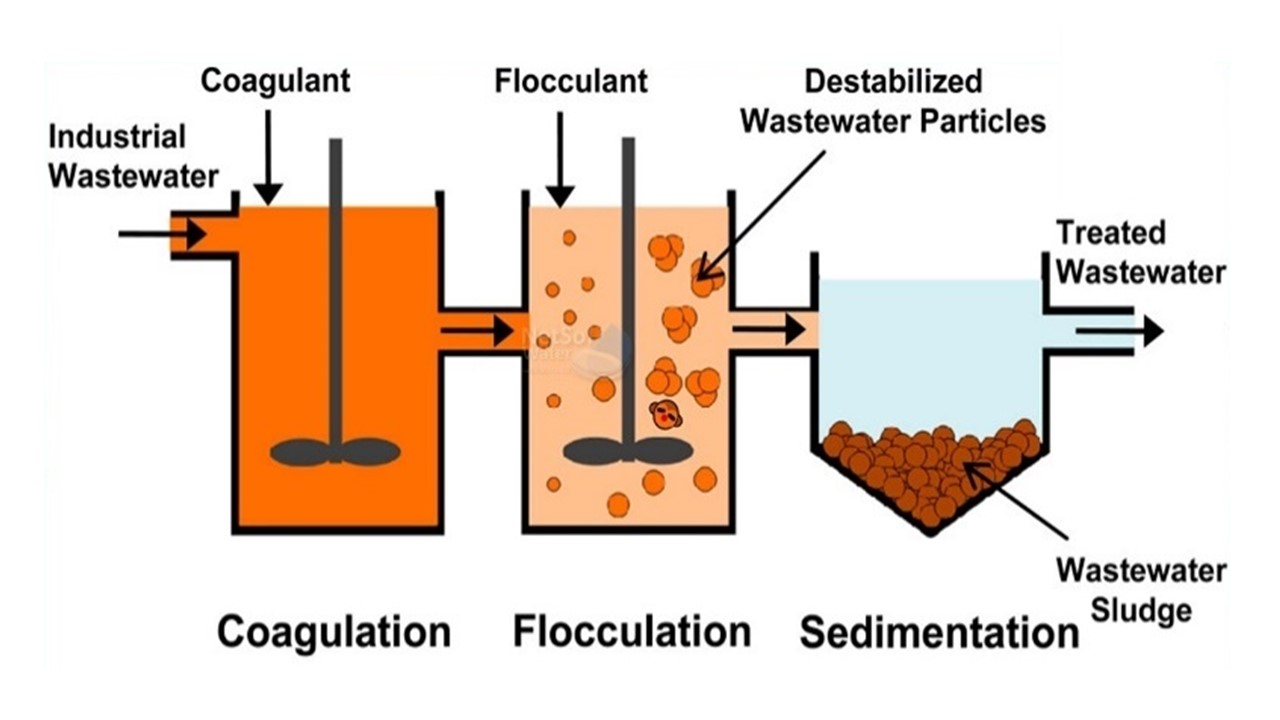Coagulant / Flocculant / Polyelectrolytes

The environment refers to the conditions in which organisms live, and its pollution is a severe ecological crisis today. Previously, natural resources like water were pure and uncontaminated, but now impurities in water pose significant threats to life. These impurities, in both dissolved and suspended forms, determine the treatment scheme needed. Suspended impurities are non-biodegradable, necessitating their removal from water and wastewater.
The coagulation-flocculation method offers a sustainable solution for treating surface water, groundwater, synthetic water, and industrial effluents. Traditionally, inorganic coagulants were used, but they required high dosages, produced poor results, and generated large quantities of sludge. To improve this, organic polyelectrolytes are now combined with inorganic coagulants for better efficiency.
Treatment plants face stricter regulations and higher standards for water quality. Advances in control strategies and instrument design have improved the monitoring and controlling of the coagulation process. Online floc analyzers provide valuable data on particle aggregation dynamics, aiding in the optimization of coagulation to form large, easily settled flocs. Proper mixing is crucial for effective floc formation, as diffusion and collision of colloidal particles limit aggregation.
Polyelectrolytes - The Flocculation Agents
Polyelectrolytes are chemical flocculants used in water treatment; they act mainly in the coagulation-flocculation stage and in the conditioning/thickening of the sludge line. Polyelectrolytes show many applications in fields, such as in water treatment as flocculation agents, in ceramic slurries as dispersant agents, and in concrete mixtures as super-plasticizers. Polyelectrolytes are long chain organic polymers often having molecular weights in excess of one million and are either natural or synthetic in origin. The term “polyelectrolyte” was introduced to include those polymers which, by some ion-producing mechanism, can become converted to a polymer molecule having electrical charges along its length. The electrical charges arise from, the presence of ionizable functional groups along the polymer chain. Polyelectrolytes are, therefore, polymeric-electrolytes, i.e., having characteristics of both polymers and electrolytes.
Commercial polyelectrolytes used in the aggregation of suspended matter are water-soluble. They may come in granular forms, in form of powder, or as highly-viscous liquids. All existing polyelectrolytes have a tendency to degrade when stored over a period of time – For a particular product, such a period is usually stated by the manufacturer. In general, the more dilute a polyelectrolyte solution is, the faster the degradation, which probably involves the breaking up of the long chains, resulting in decreasing viscosity.
Extent Of Utilization Of Polyelectrolytes
The use and importance of polyelectrolytes is increasing rapidly. The number of manufacturers producing these materials is likewise increasing. Synthetic polyelectrolytes have found considerable applications in the following broad areas:
> Process industries
> Industrial wastewater treatment
> Water treatment
> Domestic wastewater treatment
Commercially available polyelectrolytes include PolyDimethylammonium chloride (PolyDADMAC), Polyacrylic acid (PAA), and Polystyrene sulfonate. Commercial grades of polyelectrolytes (PAAs) are available from Dow Chemical (Duramax, Tamol, Romax, Dowex), Rohm and Haas (Acusol, Acumer), BASF (Dispex®, Magnafloc®), and Arkema (Rheoslove, Terrablend). Specific uses of polyelectrolytes in process industries include clarification of raw sugar juice in the sugar industry; separation of gypsum from wet process phosphoric acid; settling improvement in coal-washer operation; increasing thickener capacity in wet process cement manufacture; separation of clay impurities from hot borax streams; improving the quality of metal deposition in the electrolytic refining or electrowinning of copper and zinc; improvement of thickening operations in uranium processing, and so on. Polyelectrolytes can also be used to treat industrial wastewater. The fight against river pollution is getting more and more intense, and industries need all the help they can get. Polyelectrolytes are becoming an increasingly important factor in resolving these pollution issues. In the future, polyelectrolytes will have a greater impact on industrial wastewater treatment than on municipal wastewater treatment. This might be due to the fact that industrial wastewater treatment plants are not subject to the same constraints as municipal wastewater treatment plants. As such, industrial waste treatment plant designers may be more focused on reducing overall treatment plant costs than on whether those savings result from capital investments or operating costs.
